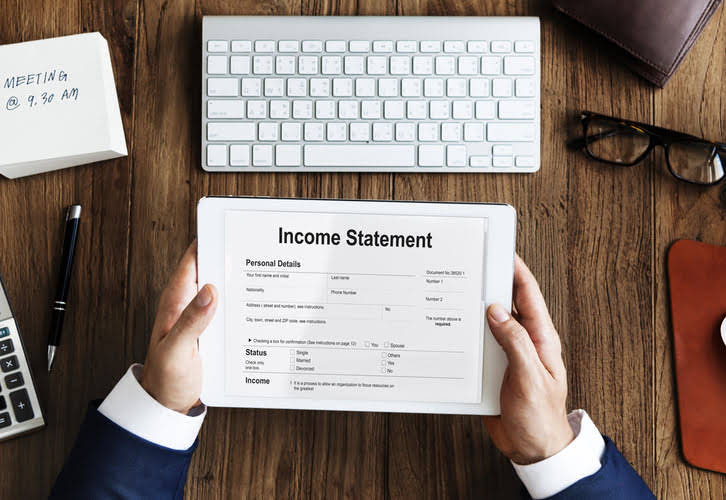
For example, say a business bought 100 units of inventory for $5 apiece, and later on bought 70 more units at $12 apiece. Using the FIFO method, the cost of goods sold (COGS) of the oldest inventory is used to determine the value of ending inventory, despite any recent changes in costs. Yes, ShipBob’s lot tracking system is designed to always ship lot items with the closest expiration date and separate out items of the same SKU with a different lot number. ShipBob is able to identify inventory locations that contain items with how do you calculate fifo an expiry date first and always ship the nearest expiring lot date first. If you have items that do not have a lot date and some that do, we will ship those with a lot date first. ShipBob finally gave us the visibility and analytics we were looking for.

How To Calculate LIFO
The average cost inventory valuation method https://www.bookstime.com/ uses an average cost for every inventory item when calculating COGS and ending inventory value. Let’s say you sold 4,000 units during the year, out of the 5,200 produced. To determine the cost of units sold, under FIFO accounting, you start with the assumption that you have sold the oldest (first-in) produced items first. The company sells an additional 50 items with this remaining inventory of 140 units. The cost of goods sold for 40 of the items is $10 and the entire first order of 100 units has been fully sold.
- You must use the same method for reporting your inventory across all of your financial statements and your tax return.
- Not suitable for year-end reporting or official financial statements.
- Understanding your ending inventory helps in developing pricing strategies, budgeting, and gauging your overall financial position.
- It can only be used when you know the price of all components of a product and can trace their costs.
- In other words, the seafood company would never leave their oldest inventory sitting idle since the food could spoil, leading to losses.
- If you sell online, most POS systems like Shopify will track inventory for you.
First-In, First-Out Inventory Method

The FIFO and LIFO compute the different cost of goods sold balances, and the amount of profit will be different on December 31st, 2021. As a result, the 2021 profit on shirt sales will be different, along with the income https://x.com/BooksTimeInc tax liability. Again, these are short-term differences that are eliminated when all of the shirts are sold. Let’s assume that a sporting goods store begins the month of April with 50 baseball gloves in inventory and purchases an additional 200 gloves. Goods available for sale totals 250 gloves, and the gloves are either sold (added to cost of goods sold) or remain in ending inventory. If the retailer sells 120 gloves in April, ending inventory is (250 goods available for sale – 120 cost of goods sold), or 130 gloves.

Regularly review stock
- The last two shirts sold (for a total of 12) were from February, which cost you $60 each.
- Use the following information to calculate the value of inventory on hand on Mar 31 and cost of goods sold during March in FIFO periodic inventory system and under FIFO perpetual inventory system.
- FIFO is one method used to determine the cost of inventory sold for your business tax return.
- As the FIFO method assumes we sell first the firstly acquired items, the ending inventory value will be lower than in other inventory valuation methods.
- With the FIFO method, since the older goods of lower value are sold first, the ending inventory tends to be worth a greater value.
- Companies with perishable goods or items heavily subject to obsolescence are more likely to use LIFO.
This is the total value of your products at the start of your accounting period (typically a month, quarter, or year). Another reason why businesses would use LIFO is that during periods of inflation, the LIFO method matches higher cost inventory with revenue. FIFO is the easiest method to use, regardless of industry, and this inventory valuation method complies with GAAP and IFRS. Using FIFO simplifies the accounting process because the oldest items in inventory are assumed to be sold first. When Sterling uses FIFO, all of the $50 units are sold first, followed by the items at $54.

Weighted Average vs. FIFO vs. LIFO: An Example
- This gives businesses a better representation of the costs of goods sold.
- FIFO often results in higher net income and higher inventory balances on the balance sheet.
- This is because she presumes that she sold the 80 units that she bought for $3 apiece first.
- The other 10 units that are sold have a cost of $15 each and the remaining 90 units in inventory are valued at $15 each or the most recent price paid.
- The remaining two guitars acquired in February and March are assumed to be unsold.
- Extensiv also enables real-time visibility into inventory levels and product aging, facilitating FIFO adoption.
- To calculate her COGS for the trade show, Bertie will count 100 bars at $2.00 and 200 at $1.50.
Then, how much you record as COGS will impact the net profit margin. If COGS shows a higher value, profitability will be lower, and the company will have to pay lower taxes jeux gonflables. Meanwhile, if you record a lower COGS, the company will report a higher profit margin and pay higher taxes. You can use our online FIFO calculator and play with the number of products you sold to determine your COGS. After that sale, your ending inventory is the remaining eight shirts. To calculate the inventory value, multiply the number of shirts remaining by this value.
- With QuickBooks Enterprise, you’ll know how much your inventory is worth so you can make real-time business decisions.
- Like other legitimate business costs, the cost of the products you buy to resell can be deducted from your business income to reduce your taxes.
- There are balance sheet implications between these two valuation methods.
- It helps identify overstocked items and areas where you can reduce excess products to save money.
- Assuming that prices are rising, this means that inventory levels are going to be highest as the most recent goods (often the most expensive) are being kept in inventory.
- While the LIFO inventory valuation method is accepted in the United States, it is considered controversial and prohibited by the International Financial Reporting Standards (IFRS).

